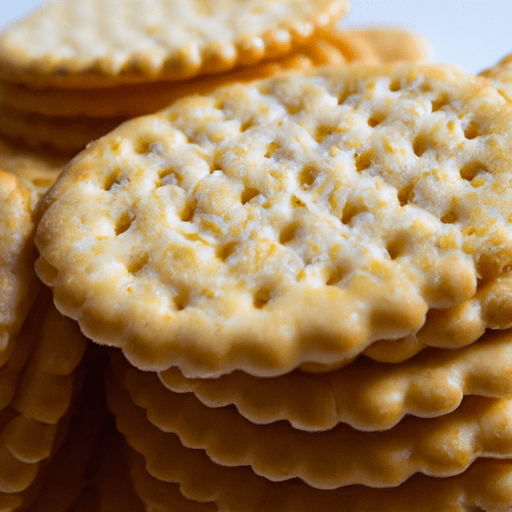The Bite-Sized Delight: Marie Biscuit
If you’re a fan of cookies, chances are you’ve come across Marie biscuits. These delicate little treats are a popular choice among both bakers and consumers alike. In this article, we’ll take a closer look at the marvellous Marie biscuit - its taste, common uses in cooking, nutritional value, and uncover some interesting history and facts about this bite-sized delight.
Flaky and Delicate
One bite into a Marie biscuit, and you’ll be met with a delightful explosion of flaky and delicate goodness. These biscuits are known for their crisp texture and subtle sweetness. A perfect balance, they are enjoyed by people of all ages and are versatile enough to be paired with various ingredients to create both sweet and savoury delights.
Common Uses in Cooking
Marie biscuits are incredibly versatile and can be used in a variety of dishes. From layered dessert treats to cheesecakes and decadent cakes, these biscuits can be crushed and combined with butter to form a delicious crust for pies and tarts. Their neutral taste makes them an ideal choice as a base to highlight other flavors.
On the sweeter side, many enjoy pairing Marie biscuits with a thick layer of chocolate spread or dipping them into tea or coffee. They can also be used to create a delightful trifle by layering them with fruits, custard, and whipped cream. Their light texture brings a satisfying crunch to any dessert.
Nutritional Value
While Marie biscuits may be a treat for the taste buds, it’s important to consider their nutritional value. They are typically low in sugar, making them a healthier option than many other cookies on the market. These biscuits also contain small amounts of iron, calcium, and essential vitamins, making them a better alternative for satisfying your occasional sweet tooth.
A Brief History
Marie biscuits have a rich history that can be traced back to their creation in the 19th century. They were named after the Grand Duchess Maria Alexandrovna of Russia, who married the Duke of Edinburgh, hence the name “Marie.” This simple cookie quickly gained popularity in Europe and eventually spread to other parts of the world.
Fun Facts
- Marie biscuits were famously included in the rations of soldiers during World War I and II.
- Marie biscuits are known by different names in various countries, such as “Maria” in Spain and Latin American countries, and “Mariebon” in Indonesia.
- In some cultures, Marie biscuits are given to infants as one of their first solid foods due to their soft texture and mild taste.
So, whether you enjoy them on their own, use them as a base in your desserts, or dip them in your tea or coffee, Marie biscuits are a delightful addition to any kitchen. Their crispy and delicate nature, combined with their versatility and modest nutritional value, make them a popular choice for both sweet and savoury creations. So why not grab a pack and let your imagination run wild with all the possibilities these little biscuits have to offer?
Marie Biscuit
Origin: The Marie biscuit was created by the British biscuit manufacturer Peek Freans in the 19th century. The biscuit was named after Maria Alexandrovna, the Duchess of Edinburgh and the daughter of Tsar Alexander II of Russia.
Common Uses: Marie biscuits are a type of sweet, plain biscuit that is popular all over the world. They are often enjoyed on their own as a snack or used as a base for various desserts like cheesecakes, pies, and tarts. Marie biscuits can also be crushed and used as a crust for ice cream cakes or as a topping for fruit salads.
Nutritional Benefits: Marie biscuits are relatively light and have a simple recipe that includes wheat flour, sugar, vegetable oil, and leavening agents. They are low in saturated fat and have a moderate amount of sugar. However, they are not considered a significant source of fiber, protein, or essential vitamins and minerals. As with any food, it’s important to consume Marie biscuits in moderation as part of a balanced diet.
Unique Properties or Historical Significance: Marie biscuits are known for their crisp and crunchy texture. Their simplicity and versatility have made them a staple in many households. The biscuits became particularly popular during times of war due to their long shelf life and ability to withstand transportation. Marie biscuits are now enjoyed in many countries around the world and have become a part of various culinary traditions.




Use the share button below if you liked it.
It makes me smile, when I see it.